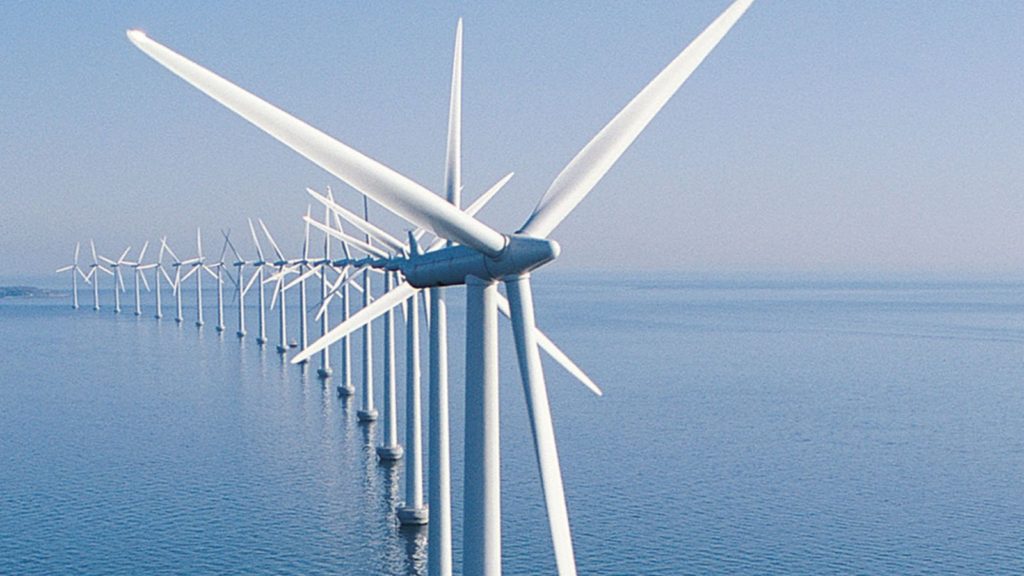Following up on our series of myth-busting posts we come to the second most asked question: Why don’t you have a wind turbine?
Oh, let me count the reasons why…
Part of the issue is the physics of how a wind turbine works. While they work great at the Megawatt (that’s 1 million watts) utility-scale (and even then require diligent engineering and site selection) they aren’t great for the microscale situations (short blades, low wind speeds) that most off-the-shelf consumer turbines are used in.
We can find out why, by looking at the equation for the theoretical power output of a turbine, which is equal to:
Pturbine = 1/2 x rho x Aswept x 0.4 x V^3
Where rho is the density of air at sea level, or 1.225 kg/m3, Aswept is the effective area the turbine blades present, 0.4 is a standard efficiency factor for a typical blade design (might be less without good aerodynamics). Finally, our key variable is the wind velocity (in m/s), which gets cubed. This equation leaves out any inefficiencies of the motor (85-90%) or the gear train (75-80%) as well as other parasitic losses.
Issue #1 – Speed
If we run the numbers on a ~2m^2 swept area (about the size of the 2kW unit from MW&S), we see that we need at least 30mph to get 1kW (on a 2kW rated turbine), this needs to be constant and smooth wind velocity, not gusts (turbulent air increases aerodynamic losses).
Example Turbine Power
0.5×1.225×2×0.4×13.4^3 = 1,178W
If we look at the graph on the MW&S product page, we see almost exactly the same thing graphically. Further, this turbine has a cut-in speed of 6mph (2.7m/s), meaning it needs winds of at least 6mph before it starts producing power. If we have a gander at some wind resource maps of the US (courtesy of NREL) we can see that, save for parts of Wyoming and the Midwest (where most utility installs are!), much of the US does not have the consistent wind speeds of the kind needed to generate significant amounts of power.

Issue #2 – Height
One of the primary assumptions made by most wind turbine retailers is that the turbine will be situated at a great height, away from obstructions, to ensure consistent wind speeds and smoother airflow. As an individual with a background in ham radio, I can attest that constructing a 65ft tower that can withstand 100mph+ winds is not an inexpensive feat. Furthermore, to prevent the turbine from experiencing an unscheduled rapid disassembly (which is to say go…BOOM) from the resulting excessive speeds (fun video of that) a high-power rectifier plus diversion load or brake/clutch are required when the batteries are full and the wind is still blowing. These additional components raise the cost of the overall system significantly, not including the price of the tower, necessary footings, or guy wires.
Issue #3 – Area
The worlds largest turbine ranked by area is the Samsung 7.0-171, with a whopping 171m (561ft) diameter, equating to a 22,966m2 swept area, this thing could theoretically crank out almost half a megawatt in 8mph winds (not sure what it’s cut in speed is though). While having this gargantuan whirly gig in your backyard might make the neighbors blush, it underscores just how much of an impact the catchment area of a turbine has on captured power.
The astute amongst you may also realize that you would need to put the turbine on a tower at least 85m (278ft) tall, to prevent the blade tips from chipping away at the dirt underneath, this, of course, brings us right back to issue #2. But why not just get a bigger turbine! I can hear you say…
Well, as an exercise, we can calculate that we would need a catchment area of 130m2 or roughly a 12m (40ft) diameter turbine to collect 2kW at 4m/s (8mph), easy enough you say, but think of the cost of building 6m blades and attaching them to a generator at 30m up in the air, the answer is that it is far from trivial for the average DIYer. Even if we assume you live in a very windy part of Texas with an average wind speed of 7.5m/s, you would still need a 5m turbine to collect 2kW, again placed 30m up in the air. At that point, you might be approaching a reasonable power v.s scale level, but the capital costs to get there are likely to be astronomical on a $/Watt basis compared to solar.
Conclusion
As you start factoring in all the additional costs and challenges, what might have seemed like a cheap way to generate electricity can quickly turn into an expensive construction project with ongoing maintenance costs. To put it simply, if you’re looking for a way to generate power for your home that’s reliable, cheap, and easy to set up, then getting a few solar panels is still the way to go. Sure, there are other options out there like micro-hydro, but we’ll save that topic for another blog post.

